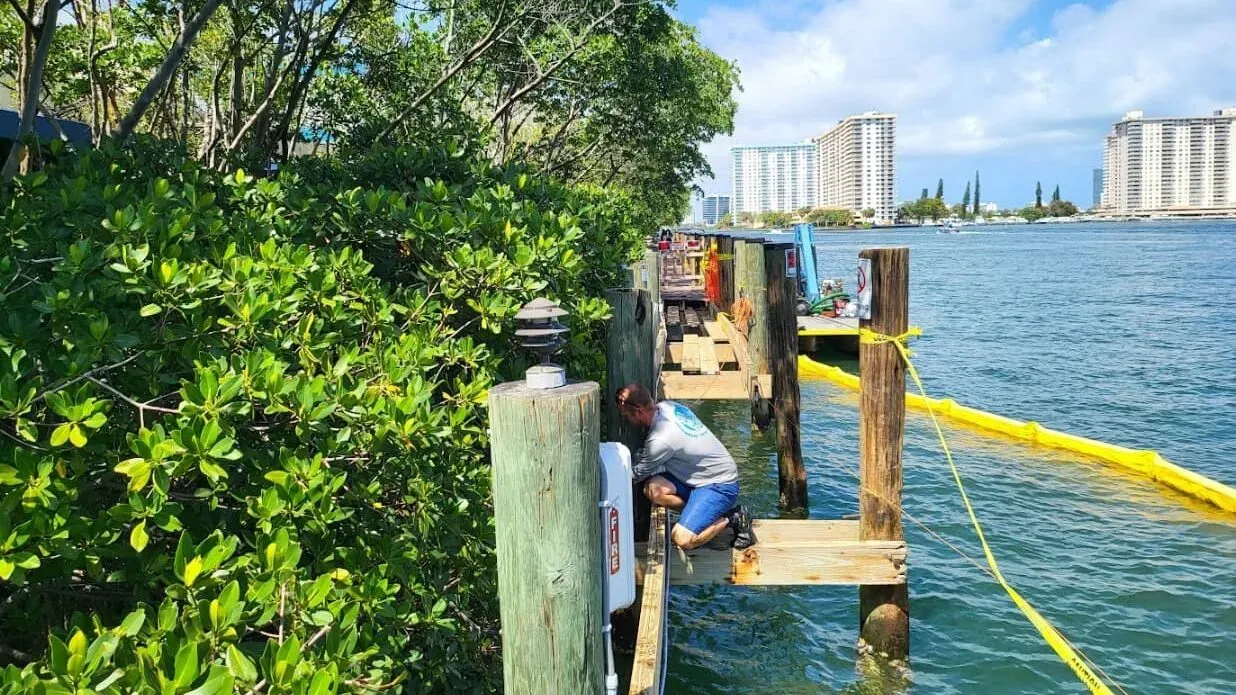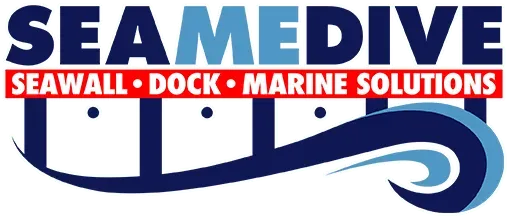As coastal communities in Florida grapple with erosion control and storm resilience, the conversation around eco-friendly seawalls in Florida has never been more crucial. With over 20 years of experience at Sea Me Dive, we understand the importance of maintaining both safety and environmental integrity in seawall construction. This article explores innovative solutions, such as Living Shorelines and hybrid approaches that integrate green infrastructure with traditional designs, providing sustainable alternatives that enhance coastal protection while preserving our natural ecosystems. Discover how these strategies can safeguard your property and contribute to a healthier coastal environment.
What Are Eco-Friendly Seawalls?
Eco-friendly seawalls are innovative coastal structures designed to protect shorelines while simultaneously enhancing the natural environment.
These eco-friendly seawalls in Florida are specifically tailored to address Florida’s unique coastal challenges and ecosystems.
Benefits of Eco-Friendly Seawalls in Florida
The benefits of eco-friendly seawalls in Florida are significant for enhancing environmental resilience and protecting property. These advantages are especially crucial in coastal areas that are increasingly vulnerable to storm damage and rising sea levels.

Environmental Impact
The environmental impact of eco-friendly seawalls in Florida includes improved habitat restoration and enhanced ecosystem services, making them essential for Florida’s coastal communities.
These seawalls incorporate native plants, such as saltmarsh grasses and mangroves, which provide critical habitats for fish and other marine organisms.
An innovative approach was utilized in Fort Lauderdale’s restoration project, employing Living Shorelines that combine coastal engineering with environmental enhancement. This project not only reduced flooding risks but also increased local biodiversity by creating habitats for juvenile fish and crabs.
Cost-Effectiveness
Eco-friendly seawall construction in Florida are cost-effective in the long run due to their lower maintenance costs and superior protection for surrounding properties against coastal flooding.
Traditional seawalls typically have high initial costs, with estimates ranging from $150 to $300 per linear foot depending on materials and location (Wall Street Journal, 2017). In contrast, eco-friendly designs such as living shorelines cost approximately $75 to $200 per linear foot and generally require less maintenance (NOAA, 2020).
Over a 10-year period, repairs on traditional seawalls can amount to as much as $10,000, while eco-friendly designs have shown significantly lower repair costs, averaging around $2,000 (U.S. Army Corps of Engineers, 2019).
A 2018 survey of coastal restoration projects across the U.S. Great Lakes region found that, aside from stabilizing shorelines, eco-friendly seawall designs created habitats for local flora and fauna, enhancing ecosystem services and benefits for human communities (Environmental Law Institute, 2018).
Design and Functionality
The eco-friendly seawall design and functionality of living shorelines are rooted in ecological principles, ensuring that they provide both protection and habitat enhancement.
Typically, the plants used in living shorelines and other green infrastructure systems include native salt marsh grasses, sedges, and shrubs. Spartina alterniflora is often a preferred choice because it stabilizes soil and provides habitat for wildlife. The placement of plants is intentional; dense plantings are utilized to create buffers that dissipate wave energy and reduce erosion.
For instance, in a living shoreline project on the Outer Banks of North Carolina, measurements of wave height and energy taken before and after construction revealed that the living shoreline reduced wave height by approximately 52% and wave energy by 60% (Ferrario et al., 2016). This project also resulted in a 15% increase in biodiversity within the first year (Scyphers et al., 2015).
Plus careful plant selection and placement, engineering techniques such as tiered planting beds for marsh grasses are employed. These beds help retain sediment while allowing healthy aquatic systems to flourish.
Maintenance of Eco-Friendly Seawalls
Regular maintenance of eco-friendly seawalls is crucial to maximize their lifespan and effectiveness against coastal hazards.
- Importance of Regular Care: Neglecting maintenance can accelerate deterioration, increasing the risk of property damage.
- Inspection Routine: Conduct quarterly inspections to identify erosion, cracks, or excessive vegetation growth that could weaken the structure.
- Vegetation Management: Address algae or plant overgrowth early to avoid costly repairs, as demonstrated in a coastal homeowner case study.
- Drainage Checks: Regularly inspect and clear drainage systems to prevent clogs, which can raise water pressure behind the wall and cause structural failure.
- Long-Term Benefits: Consistent maintenance extends seawall durability and safeguards waterfront properties from severe damage.
Can You Make Your Existing Seawalls Eco-friendly?
Yes, you can make your existing seawalls eco-friendly through retrofitting and incorporating natural elements that enhance both their function and ecological value. Eco-friendly seawall construction in Florida often involves adding features such as native vegetation plantings, oyster reef restoration, or permeable materials to improve shoreline stability and promote habitat creation. These modifications help reduce wave energy, improve water quality, and increase biodiversity while maintaining protection for your property. Retrofitting existing seawalls with these green infrastructure techniques is an effective way to combine coastal defense with environmental benefits.
Can Hybrid Solutions Combining Living Shorelines and Traditional Seawalls Effectively Protect Coastlines While Improving Habitat?
Yes. Hybrid approaches integrate living shoreline elements, such as marsh plants or oyster reefs, with conventional seawall structures to both stabilize shorelines and enhance ecological functions. By mimicking natural shorelines more closely, these solutions provide coastal protection while fostering habitat complexity and supporting local ecosystems.
What Design Features Can Make New or Existing Seawalls More Hospitable to Marine Life?
Adding textured surfaces, cavities, crevices, and small pools to seawalls increases habitat complexity, encouraging marine plants and animals to colonize the structure. For example, eco-friendly seawall construction in Florida employs biomimicry-inspired designs featuring 3D-printed tiles and raised areas that mimic mangrove roots, creating nooks and shelters for juvenile fish and invertebrates. These features not only enhance biodiversity but also help dissipate wave energy, improving structural resilience while supporting local ecosystems.
How Can Sea Me Dive Help You Build Seawall Construction in Florida?
Sea Me Dive specializes in seawall construction that effectively protects your property along Florida’s coast. With 20 years of experience in South Florida’s coastal waters, our expert team utilizes advanced construction techniques and high-quality materials to ensure durability and resilience against the elements. We understand the importance of safeguarding your property from erosion and storm damage, and we are committed to delivering superior shoreline protection. Ready to build a seawall that secures your property? Contact our expert team today for an eco-friendly seawall construction consultation.
